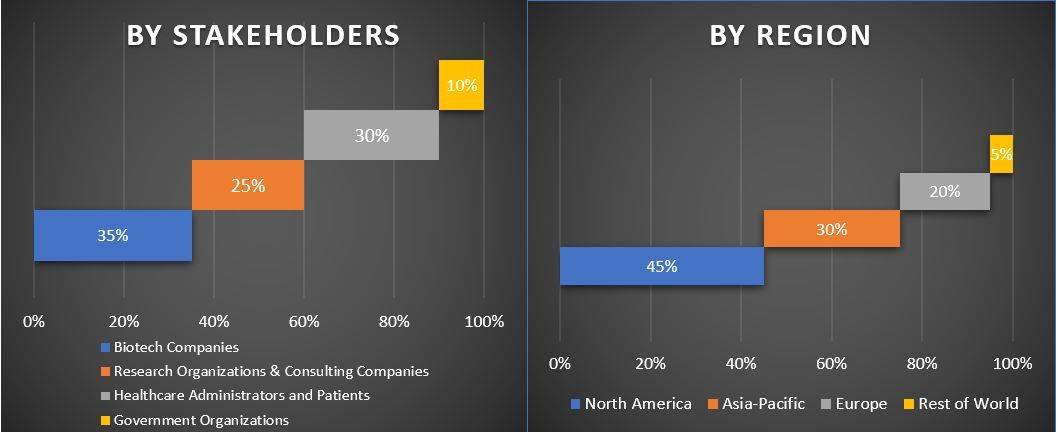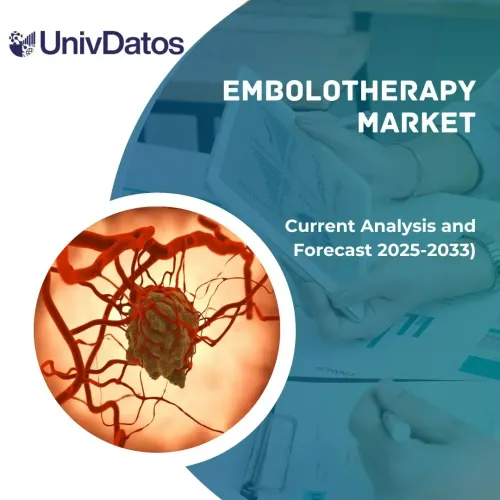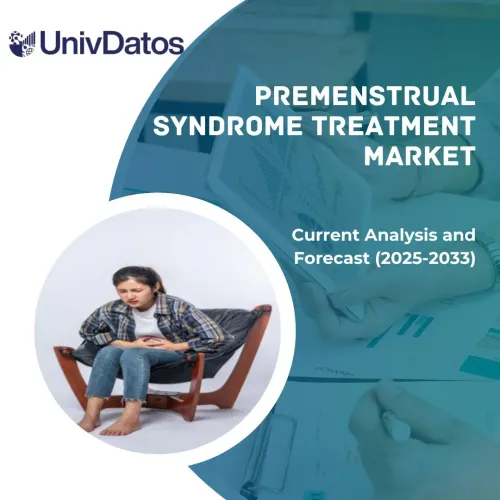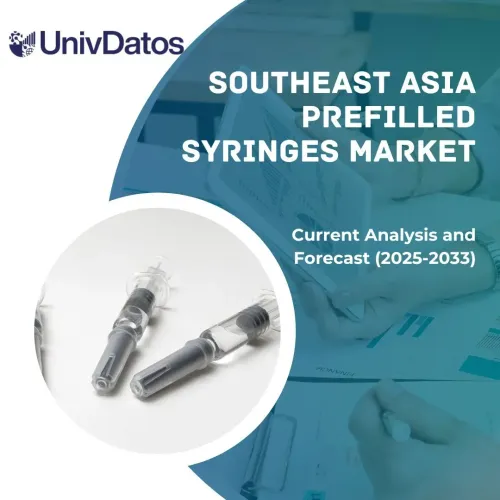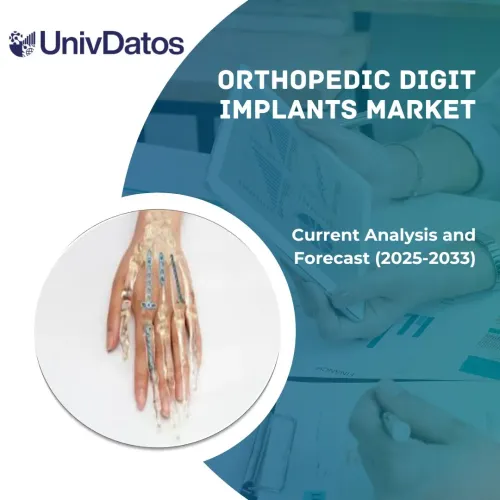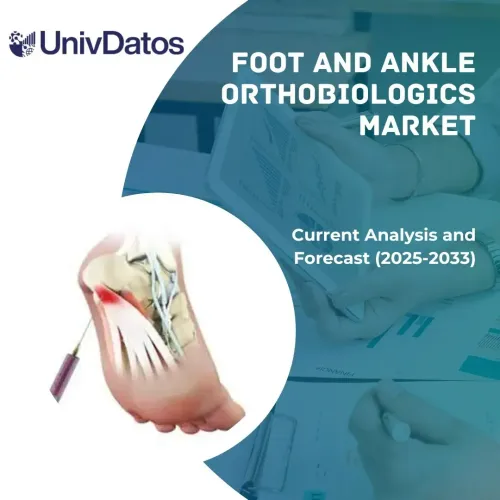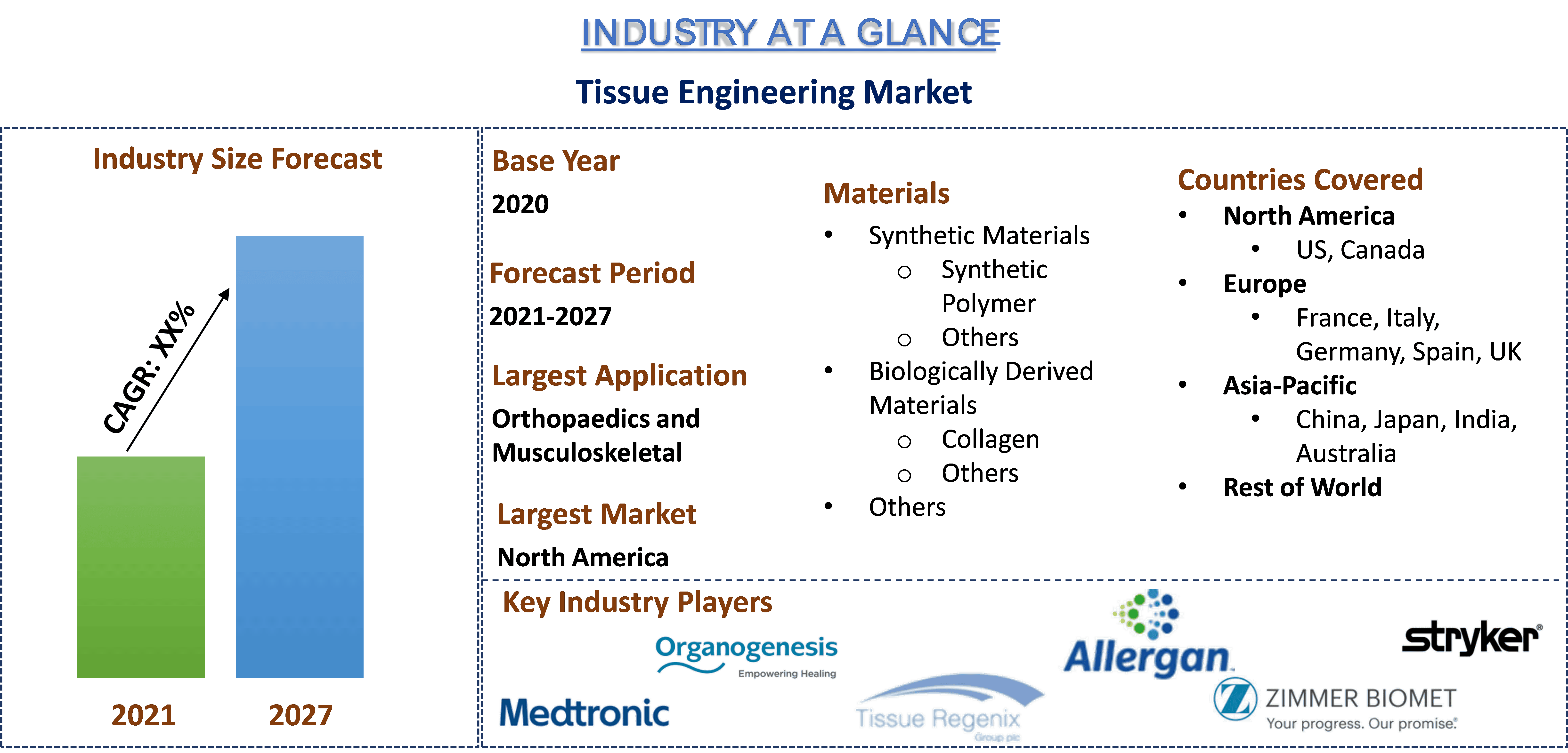
조직 공학 시장은 2020년에 30억 달러로 평가되었으며 예측 기간(2021-2027) 동안 연평균 성장률(CAGR) 14%로 성장할 것으로 예상됩니다. 3D 바이오 프린터를 사용하여 시험관 내 임플란트를 효율적으로 설계하고, 배아 세포를 줄기 세포로 대체하는 것과 같은 3D 조직 공학 분야의 기술 발전, 장기 칩 기술 및 3D 바이오 프린터를 사용하여 시험관 내 임플란트를 효율적으로 설계하는 것은 성장을 촉진할 것으로 예상됩니다. 또한 의료 및 학술 연구 활동에 대한 정부 자금 지원이 증가하면 예측 기간 동안 조직 공학 시장의 성장이 향상될 것입니다. 예를 들어, 국립 보건원(NIH)의 2019년 4월 발표에 따르면 다양한 연구, 질병 및 질병 범주(RCDC)에 대한 자금 지원 목록에서 줄기 세포 연구 및 재생 의학에 대한 자금 지원은 2018년에 각각 18억 달러와 10억 달러였습니다. NIH는 두 부문이 2020년에 각각 17억 달러와 9억 1,500만 달러의 자금 지원을 받을 것으로 추정했습니다.
또한, R&D에 대한 집중도가 높아짐에 따라 신흥 시장의 여러 기업이 미개척 시장 잠재력을 활용하려고 노력하고 있습니다. 예를 들어, RepliCel은 여러 재생 의학 회사에 투자하고 있습니다. 2019년 현재 3개의 제품(RCH-01, RCS-01, RCT-01)이 개발 단계에 있으며 피부 주입기 장치(RCI-02)는 상용화 전 생산 및 테스트 단계에 있습니다. 연구자들은 줄기 세포를 재프로그래밍하여 장기의 정상적인 기능을 회복하거나 배양된 줄기 세포를 사용하여 인공 장기 이식을 설계하고 있습니다. 줄기 세포는 다양한 응용 분야에서 사용되므로 조직 공학 시장은 유익한 결과를 달성할 것으로 예상됩니다. 예를 들어, 줄기 세포를 활용하는 고급 재프로그래밍 기술은 인공 심박 조율기를 대체할 것으로 예상됩니다.
조직 공학 연대기
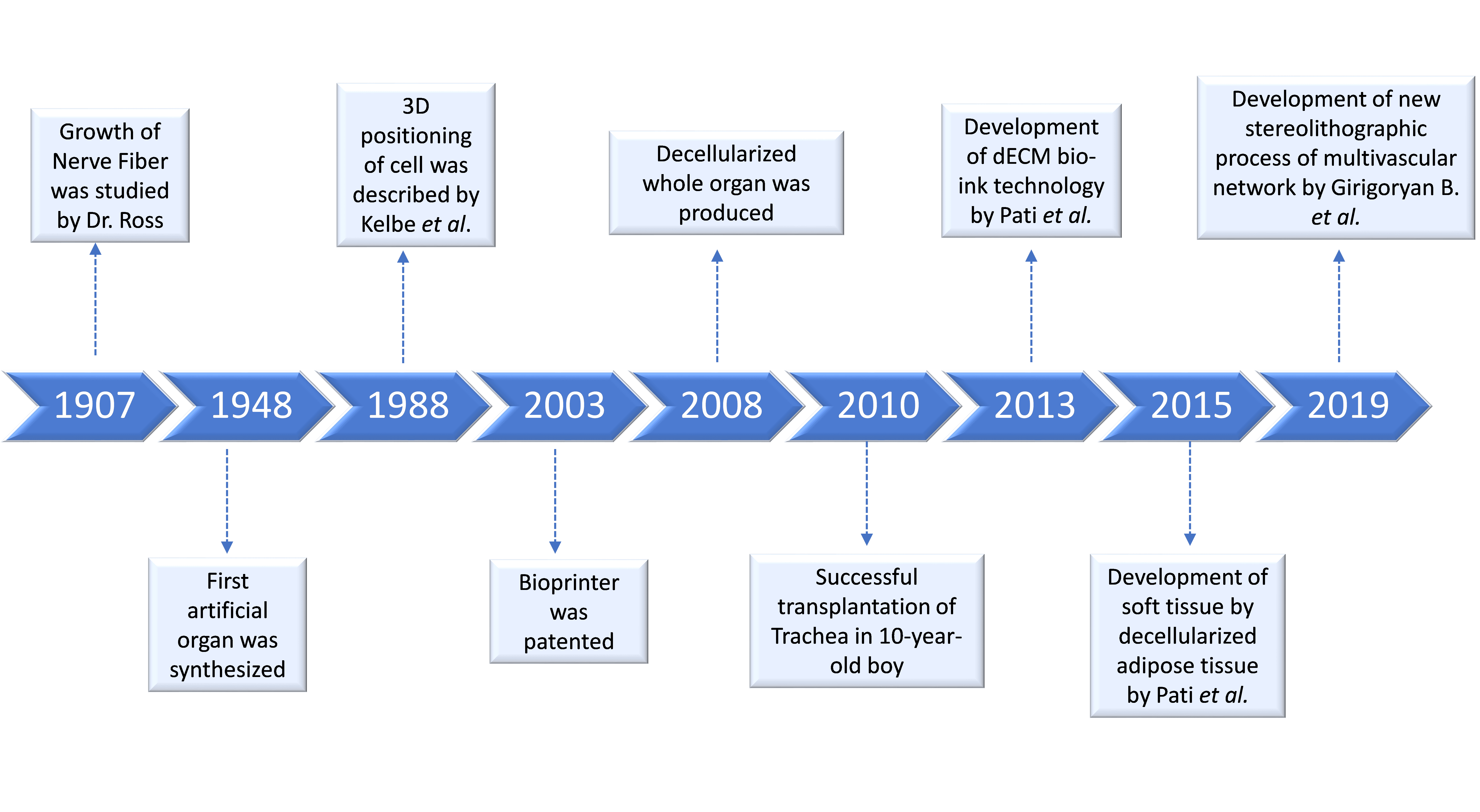
Medtronic plc, Zimmer Biomet Holdings, Inc., Allergan plc, Athersys, Inc., ACell, Inc., Organogenesis Holdings Inc., Tissue Regenix Group plc, Stryker Corporation, RTI Surgical, Inc. 및 Integra LifeSciences Corporation은 글로벌 조직 공학 시장에서 활동하는 주요 업체 중 일부입니다. 하이테크 혁신적인 제품으로 고객을 지원하기 위해 이러한 업체에서 여러 M&A 및 파트너십을 수행했습니다.
보고서에 제시된 인사이트
"재료 중 생물학적 유래 재료 부문이 가장 큰 점유율을 차지합니다."
재료를 기준으로 시장은 합성 재료, 생물학적 유래 재료 및 기타로 분류됩니다. 생물학적 유래 재료 부문은 2020년에 XX%의 점유율로 시장을 지배했으며 지속적인 발전과 광범위한 응용 분야로 인해 예측 기간 동안 지배력을 유지할 것으로 예상됩니다.
"응용 분야 중 정형외과 및 근골격계는 분석 기간 동안 가장 높은 연평균 성장률로 성장할 것으로 예상됩니다."
또한 응용 분야를 기준으로 시장은 정형외과 및 근골격계, 신경학, 심혈관, 피부 및 외피, 치과 및 기타로 분류됩니다. 2020년에는 정형외과 및 근골격계가 최대 시장 수익 점유율 XX%를 차지했으며 근골격계 질환의 유병률 증가로 인해 분석 기간 동안 지배적일 것으로 예상됩니다.
"북미는 조직 공학 시장의 가장 큰 시장 중 하나를 의미합니다."
조직 공학 시장의 시장 역학을 더 잘 이해하기 위해 북미(미국, 캐나다 및 북미 지역), 유럽(독일, 프랑스, 이탈리아, 스페인, 영국 및 유럽 지역), 아시아 태평양(중국, 일본, 인도 및 APAC 지역), 기타 세계를 포함하여 전 세계 여러 지역에 대해 자세한 분석을 수행했습니다. 북미는 시장을 지배했으며 만성 질환의 진단 및 치료를 위한 고급 기술, 민간 및 정부 자금 지원 가용성으로 인해 2020년에 XX억 달러의 수익을 창출하여 시장 확장을 촉진하고 있습니다. 그러나 아시아 태평양 지역은 예측 기간 동안 가장 높은 비율로 성장할 것입니다.
이 보고서를 구매해야 하는 이유:
- 이 연구에는 인증된 주요 업계 전문가가 검증한 시장 규모 및 예측 분석이 포함되어 있습니다.
- 이 보고서는 전체 산업 성과에 대한 간략한 검토를 한눈에 제공합니다.
- 이 보고서는 주요 비즈니스 재무, 제품 포트폴리오, 확장 전략 및 최근 개발에 대한 주요 초점을 두고 주요 업계 동료에 대한 심층 분석을 다룹니다.
- 산업 전반에 걸쳐 널리 퍼져 있는 동인, 제약, 주요 추세 및 기회에 대한 자세한 조사
- 이 연구는 다양한 부문에 걸쳐 시장을 포괄적으로 다룹니다.
- 산업에 대한 심층적인 지역 수준 분석
사용자 지정 옵션:
조직 공학 시장은 요구 사항 또는 기타 시장 부문에 따라 추가로 사용자 지정할 수 있습니다. 이 외에도 UMI는 귀하가 귀하의 비즈니스 요구 사항을 가지고 있을 수 있음을 이해하므로 귀하의 요구 사항에 완벽하게 맞는 보고서를 얻기 위해 주저하지 말고 저희에게 연락하십시오.
목차
글로벌 조직 공학 시장의 역사적 시장 분석, 현재 시장 추정, 미래 시장 예측은 주요 지역 전반에 걸쳐 다양한 질병에 대한 조직 공학 채택을 생성하고 분석하기 위해 수행된 세 가지 주요 단계였습니다. 역사적 시장 수치를 수집하고 현재 시장 규모를 추정하기 위해 광범위한 2차 연구가 수행되었습니다. 둘째, 이러한 통찰력을 검증하기 위해 수많은 결과와 가정이 고려되었습니다. 또한 조직 공학 부문의 가치 사슬 전반에 걸쳐 업계 전문가들과 광범위한 1차 인터뷰도 수행되었습니다. 1차 인터뷰를 통해 시장 수치를 가정하고 검증한 후, 전체 시장 규모를 예측하기 위해 상향식/하향식 접근 방식을 사용했습니다. 그 후, 시장 세분화 및 데이터 삼각 측량 방법을 채택하여 산업과 관련된 세그먼트 및 하위 세그먼트의 시장 규모를 추정하고 분석했습니다. 자세한 방법론은 아래에 설명되어 있습니다.
역사적 시장 규모 분석
1단계: 2차 자료에 대한 심층 연구:
연례 보고서 및 재무제표, 실적 발표, 보도 자료 등과 같은 회사 내부 자료와 저널, 뉴스 및 기사, 정부 간행물, 경쟁사 간행물, 부문 보고서, 제3자 데이터베이스 및 기타 신뢰할 수 있는 간행물을 포함한 외부 자료를 통해 조직 공학의 역사적 시장 규모를 얻기 위해 자세한 2차 연구가 수행되었습니다.
2단계: 시장 세분화:
조직 공학 시장의 역사적 시장 규모를 확보한 후, 주요 지역에 대한 다양한 세그먼트에 대한 역사적 시장 통찰력과 점유율을 수집하기 위해 자세한 2차 분석을 수행했습니다. 보고서에 포함된 주요 세그먼트는 기술 및 애플리케이션입니다. 모든 지역에서 조직 공학의 전반적인 채택을 평가하기 위해 추가적인 국가 수준 분석이 수행되었습니다.
3단계: 요인 분석:
다양한 세그먼트 및 하위 세그먼트의 역사적 시장 규모를 확보한 후, 조직 공학의 현재 시장 규모를 추정하기 위해 자세한 요인 분석을 수행했습니다. 또한 만성 질환 발생 증가 및 노인 인구 증가와 같은 종속 및 독립 변수를 사용하여 요인 분석을 수행했습니다. 전 세계 조직 공학 산업에서 최고의 파트너십, 합병 및 인수, 사업 확장, 제품 출시를 고려하여 수요 및 공급 측면 시나리오에 대한 철저한 분석이 수행되었습니다.
현재 시장 규모 추정 및 예측
현재 시장 규모 측정: 위의 3단계에서 얻은 실행 가능한 통찰력을 바탕으로 현재 시장 규모, 조직 공학 시장의 주요 업체 및 세그먼트의 시장 점유율에 도달했습니다. 필요한 모든 백분율 점유율 분할 및 시장 세분화는 위에서 언급한 2차 접근 방식을 사용하여 결정되었으며 1차 인터뷰를 통해 확인되었습니다.
추정 및 예측: 시장 추정 및 예측을 위해 이해 관계자가 사용할 수 있는 동인 및 추세, 제약 및 기회를 포함한 다양한 요인에 가중치가 할당되었습니다. 이러한 요인을 분석한 후 관련 예측 기술, 즉 상향식/하향식 접근 방식을 적용하여 전 세계 주요 시장에서 다양한 세그먼트 및 하위 세그먼트에 대해 2027년경의 시장 예측에 도달했습니다. 시장 규모를 추정하기 위해 채택된 연구 방법론은 다음과 같습니다.
- 가치(USD) 측면에서 업계의 시장 규모와 국내 주요 시장 전반에 걸친 조직 공학의 채택률
- 시장 세그먼트 및 하위 세그먼트의 모든 백분율 점유율, 분할 및 세분화
- 제공되는 서비스 측면에서 조직 공학 시장의 주요 업체. 또한 빠르게 성장하는 시장에서 경쟁하기 위해 이러한 업체가 채택한 성장 전략
시장 규모 및 점유율 검증
1차 연구: 주요 지역 전반에 걸쳐 최고 경영진(CXO/VP, 영업 책임자, 마케팅 책임자, 운영 책임자 및 지역 책임자, 국가 책임자 등)을 포함한 핵심 의견 리더(KOL)와 심층 인터뷰가 수행되었습니다. 그런 다음 1차 연구 결과를 요약하고 명시된 가설을 증명하기 위해 통계 분석을 수행했습니다. 1차 연구의 입력은 2차 결과와 통합되어 정보를 실행 가능한 통찰력으로 전환했습니다.
다양한 지역에서 1차 참가자 분할
시장 엔지니어링
조직 공학 시장의 각 세그먼트 및 하위 세그먼트의 정확한 통계 수치에 도달하고 전체 시장 추정을 완료하기 위해 데이터 삼각 측량 기술이 사용되었습니다. 데이터는 조직 공학 시장의 기술 및 애플리케이션 최종 사용자의 영역에서 다양한 매개변수와 추세를 연구한 후 여러 세그먼트 및 하위 세그먼트로 분할되었습니다.
조직 공학 시장 연구의 주요 목표
조직 공학의 현재 및 미래 시장 동향이 연구에서 정확히 지적되었습니다. 투자자는 연구에서 수행된 질적 및 양적 분석을 통해 투자에 대한 재량을 기반으로 전략적 통찰력을 얻을 수 있습니다. 현재 및 미래 시장 동향은 지역 수준에서 시장의 전반적인 매력을 결정하여 산업 참가자가 미개척 시장을 활용하여 선점자 이점을 누릴 수 있는 플랫폼을 제공했습니다. 연구의 다른 양적 목표는 다음과 같습니다.
- 가치(USD) 측면에서 조직 공학의 현재 및 예측 시장 규모를 분석합니다. 또한 다양한 세그먼트 및 하위 세그먼트의 현재 및 예측 시장 규모를 분석합니다.
- 연구의 세그먼트에는 재료 및 애플리케이션 영역이 포함됩니다.
- 조직 공학 산업에 대한 규제 프레임워크의 정의 및 분석
- 다양한 중개자의 존재와 관련된 가치 사슬을 분석하고 산업의 고객 및 경쟁자 행동을 분석합니다.
- 주요 지역에 대한 조직 공학 시장의 현재 및 예측 시장 규모를 분석합니다.
- 보고서에서 연구된 주요 지역에는 북미(미국 및 캐나다), 유럽(독일, 프랑스, 이탈리아, 스페인 및 영국), 아시아 태평양(중국, 일본, 인도 및 호주) 및 기타 지역이 포함됩니다.
- 조직 공학 시장의 회사 프로필과 빠르게 성장하는 시장에서 생존하기 위해 시장 참여자가 채택한 성장 전략
- 산업에 대한 심층적인 지역 수준 분석
관련 보고서
이 상품을 구매한 고객님들도 함께 구매하신 상품

